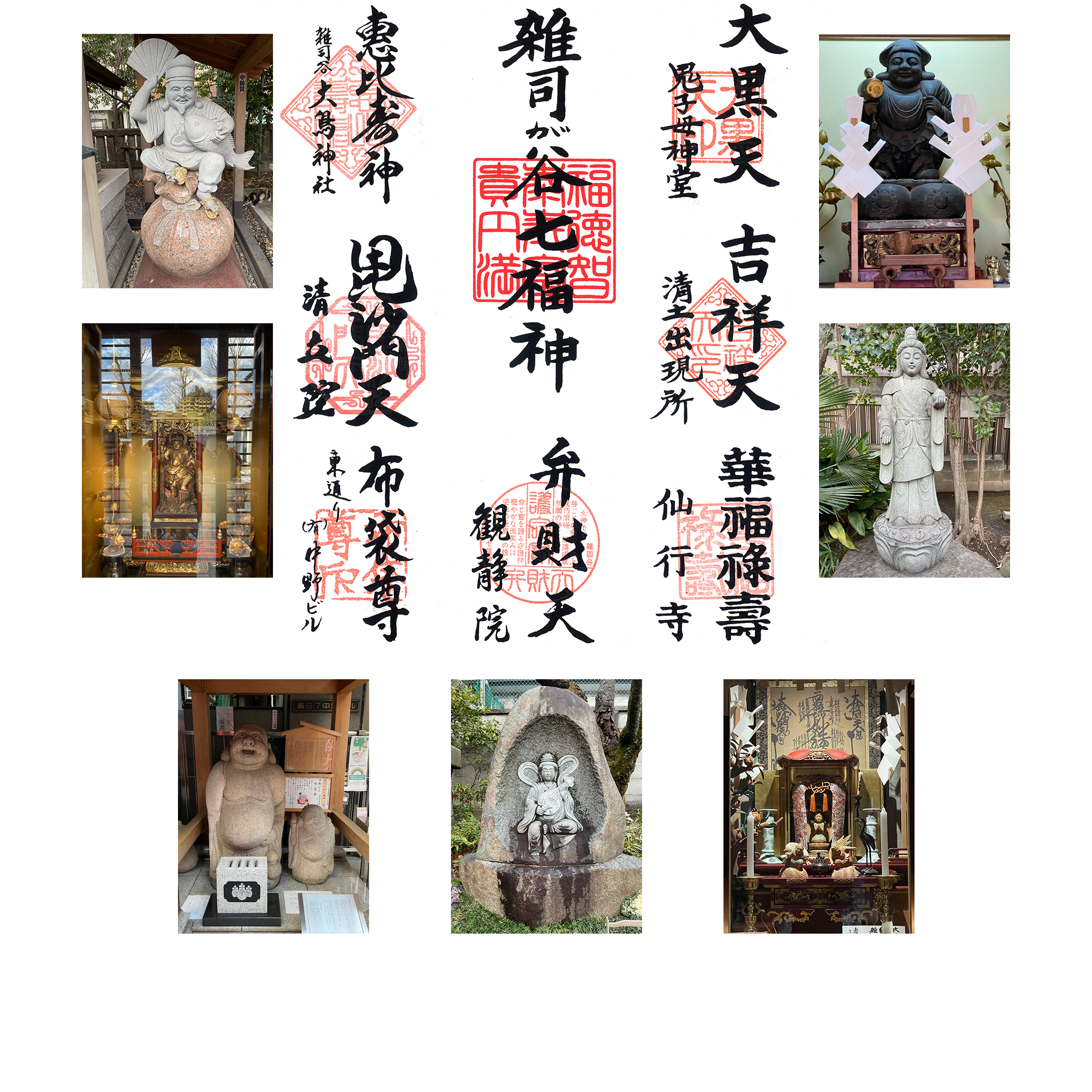The Zoshigaya Seven Lucky Gods
Although located in the suburbs of Ikebukuro, Tokyo
Zoshigaya, with its greenery and emotional landscape, is
Federation of UNESCO Associations in Japan
The area has been registered as a Future Heritage site.
The Zoshigaya Seven Lucky Gods are
The town was established as a town revitalization project in
and culture across Toshima and Bunkyo wards.
The Seven Gods of Good Fortune Tour is a tour of the Seven Gods of Good Fortune.

Seiryuin and Bishamonten
It is said that worshippers of the Seven Gods of Good Fortune will be rid of seven kinds of misfortune and receive seven kinds of happiness.
Among them, Bishamonten is a warrior god who is one of the Four Heavenly Kings in Buddhism, along with Jikokuten, Zocho-ten, and Hiromokuten.
In India, Bishamonten was originally regarded as a god of treasure. In the process of its transmission from Central Asia to China, it became a god of war and a guardian deity.
He was revered as a god of military fortune that bestowed immense virtue and courage, and became one of the Seven Gods of Good Fortune by bestowing fortune, treasure, and wealth along with victory in opening the door to fortune.
It is said that the belief in the Seven Gods of Good Fortune began in the Muromachi period (1336-1573), but it was not until the Edo period (1603-1868) that they became popular in their present form.
It is said that Bishamonten has been residing at this temple for more than 400 years.
The statue of Bishamonten (Bishamonten) in Seiryuin is a designated cultural property of Toshima City and is registered as a Future Heritage of Japan by the Federation of UNESCO Associations in Japan.
Ebis God | Otori Shrine |
|---|---|
Daikokuten | Zoshigaya Kishimojin |
Benzaiten | Ganjoin Temple |
Hoteison | Nakano Building |
Fukurokuju | Sengyoji Temple |
Kisshoten(Jurojin) | Seido Kishimojin |
Bishamonten | Seiryuin |